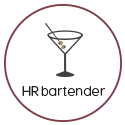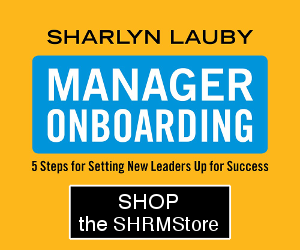I believe that one of the most mysterious technology terms out there is SEO (aka Search Engine Optimization). Lots of people claim to be SEO experts. Many folks will tell you to do this or that because it “improves SEO.” But honestly, what does that mean?
A couple of years ago, I had the opportunity to hear Susan Vitale, chief marketing officer at iCIMS, talk about SEO in the context of human resources. It was a super interesting webinar so I asked Susan if she would share her expertise with us. Thankfully, she said yes.
Susan, briefly describe for readers what Search Engine Optimization (SEO) is and why we should care about it.
 [Susan] SEO is the practice of improving the visibility and ranking of a website in a search engine’s ‘organic,’ or unpaid, results. In most cases, the higher a website ranks on the search results page, the more visitors to the website it will receive from the search engine’s users.
[Susan] SEO is the practice of improving the visibility and ranking of a website in a search engine’s ‘organic,’ or unpaid, results. In most cases, the higher a website ranks on the search results page, the more visitors to the website it will receive from the search engine’s users.
HR professionals should care about SEO because it is crucial to their talent acquisition efforts. Although traditional recruitment advertising techniques generate visits to your career site, more and more candidates are using major search engines like Google or Bing to find jobs.
One of the first things job seekers do in their quest to find their dream job is to simply run a Google search of their desired job title, plus a location. Here’s what happens each month:
- There are 17 billion searches performed online, 11.9 billion on Google alone.
- Over 300 million job-related searches take place on other search engines. (Source: DirectEmployers)
The challenge is this: If you were to search for a job opening, there will typically be far too many results to go through (for example, a Google search for marketing jobs in New Jersey yields about 40,100,000 results). Most of the results on the first page are populated by job board sites and websites such as Craigslist. With Google only displaying 10 results per page, competition for these spots can be very intense. Companies need to find ways to raise their profile on search engines. Fortunately all of this can be addressed to work in your favor if you put the right practices into place to make your careers site more SEO-friendly.
I’ve always found SEO to be very broad in scope. At times, it can appear a bit overwhelming. What areas do you see as having the greatest potential to be overlooked? And, if HR only has time to focus on one aspect of SEO, what should that be?
[Susan] Mobile optimized career microsites are becoming an important part of companies’ SEO strategies for talent acquisition because they help drive traffic to their career portals. Career microsites are small search engine optimized websites that advertise your jobs and point traffic to your career portal. Unlike traditional job boards, a career microsite is like your company’s own job board, in that it is fully branded and can include additional information to sell your company.
The real power of the career microsite and the main difference between a career microsite and a career portal is the website address, or the URL. A strong URL is a key component in SEO which drives traffic to your site by helping your company rank higher in a standard, non-branded (meaning, not using your company name) Google search. It is an independent website using keywords and the .JOBS domain to support an improved search engine ranking. A company’s career portal, however, uses a .com domain and a branded website address. Because of this, the career portal does not rank as high on non-branded searches with any of the most popular search engines like Google, Bing or Yahoo.
The value of the career microsite, therefore, is that in using SEO techniques, your career microsite and your job postings rank more highly in a Google search. This allows your open positions to be found, even if a candidate does not know your company name and performs a Google search using generic job titles or locations.
SEO changes so much, as evidenced by the recent Google algorithm change giving preference to mobile optimized sites. Are there 2-3 SEO basics that everyone can and should remember?
[Susan] Google changed its algorithm to rank mobile friendly sites higher in search rankings. This is BIG news for businesses that rely on organic website traffic. It’s also important for employers who use their career microsite to attract and hire top talent since Google’s new algorithm will bump down sites in search rankings that are not mobile optimized.
Talent recruiters are potentially losing out on due to obsolete technology. Consider these statistics:
- Based on iCIMS’ in-platform data consisting of more than 2,700 employers in varying industries, we see that mobile usage among job seekers has increased by 60 percent in the past year alone.
- According to a recent study by Aberdeen Group, 70 percent of respondents said they have used their mobile devices to search for jobs, and 51 percent are already applying for jobs on mobile.
- In a Careerbuilder candidate behavior study, 65 percent of workers who search for jobs via mobile devices will leave a website if it isn’t mobile-optimized, and 40 percent walk away with a more negative opinion of the company.
The disruptive force of technology has permanently changed the way people apply for jobs and how companies hire, leaving dramatic and lasting effects on talent acquisition practices. From the rise of job aggregator apps to social recruiting to increased video usage among both job seekers and employers, a digital revolution has surely taken place in the industry today. A recent survey from Glassdoor even showed that 9 in 10 jobseekers expect to use their mobile device during the job search process in the next 12 months.
The most basic takeaway for recruiters: if your career site is not mobile-optimized you’re already missing out on a massive number of potential candidates.
If a company is doing SEO right, what kind of results should they expect? Conversely, how can someone tell if they’re doing SEO wrong?
SEO should be part of an overall employment branding strategy that is driven by the career microsite capable of being viewed on any device. Having a consistent, well-branded company presence online and on social networks will make SEO simpler and more effective. In the end, the number and quality of candidates should increase over time due to higher search rankings and resulting traffic.
Therefore, measurement is also key. SEO is not a ‘one and done’ activity; it is an ongoing effort, so the ability to measure the success of an SEO strategy is necessary to constantly improve it. To ensure positive results, measure and track the candidate sources that are performing best for each type of role, which will enable the company to meet specific objectives and achieve maximum return on investment.
[clickToTweet tweet=”Here’s everything #HR needs to know about SEO” quote=”Here’s everything #HR needs to know about SEO” theme=”style3″]
My thanks to Susan for sharing her expertise. iCIMS has been a long-time supporter of HR Bartender. If you’re looking for more resources, tips and best practices, be sure to check out the iCIMS Hire Expectations Institute. They have an SEO for Career Sites whitepaper
While a recent study from Appcast.io shows 50 percent of job seekers use their mobile phones to search and apply for jobs, don’t panic if your career site isn’t mobile optimized. The good news is there are talent acquisition suite providers, like iCIMS, who can make it easy for companies. They employ a responsive design technique to automatically accommodate the appropriate viewing experience whether the candidate is on a desktop, smartphone or tablet.
It’s not about doing everything yourself. It’s about understanding enough to know when to partner.
Image courtesy of Sharlyn Lauby
1








thierry says
don’t panic if you’re career site
should be
don’t panic if your career site
Sharlyn Lauby says
Thanks for the catch! I’ve made the correction in the post. You wouldn’t believe how many eyes look at posts before they go live and still…a typo gets through.